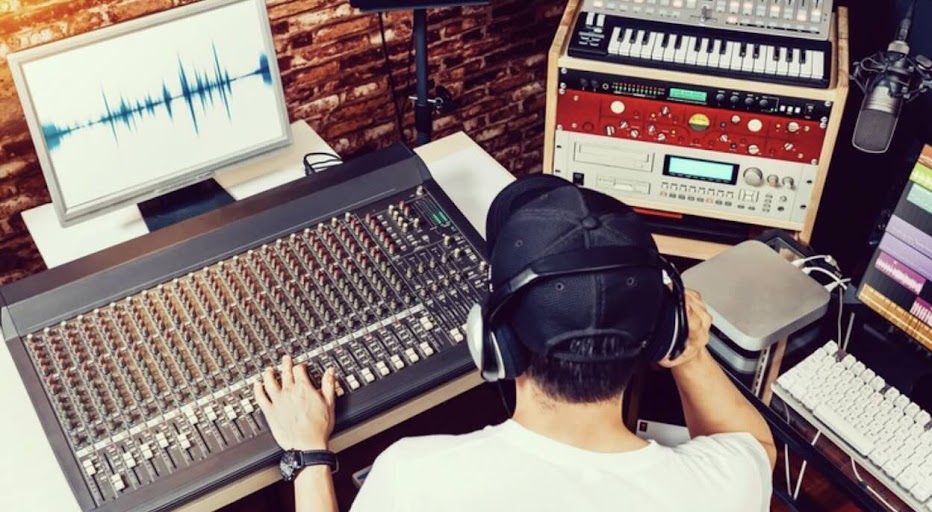The audio systems
We can understand an audio system as a chain of interconnected "blocks" or stages. The purpose of a system can be either sound recording or sound reinforcement. We will find many of these "blocks" in any audio system. Examples of systems are: a home studio, a live sound system, karaoke systems, school P.A, etc.Mic and Inst levels
All systems begin with the audio inputs. The input can receive a signal from a microphone or from any other audio source, such as electronic instruments (keyboard, guitar), processors or other devices. These elements generate very small electrical signals (mV) so they need amplification. The levels of these tiny signals are called Mic-level or Instrument level. |
| Fig. 1. Mic level. |
Whatever the input, the first stage in the system has to be an amplifier. This is called preamplifier or preamp. The preamp is an amplifier that takes a signal from a mic or instrument and amplifies it until it reaches a higher level. This level is called Line-level and it's about 1 V. Almost all consoles and audio interfaces have built-it preamps.
Line level
Once the signal reaches line-level, we can process and manipulate it in various ways. For example, we can equalize it, compress it or apply effects like echo, chorus, etc. Also, line-level signals can be mixed with other signals without noise problems. The line-level signal may be digitized too, so all these processes can be either digital or analog. We can also record line-level signals. This could be done in an analog medium (magnetic tape) or in a digital one (hard disk). |
| Fig. 2. Line level processors. |
Speaker level
When the line signal has been processed and/or recorded, then we need to amplify it even more so we can hear it. This is done through another amplification stage called power amplifier. Power amplifiers raise the energy of the audio signal from line-level to speaker-level. This level can reach up to 100 V, so it must be handled with caution. That's why we have to use thick cables for this kind of signals. These signals are connected to a loudspeaker. The speaker will convert the electrical variations into movements of the cone. Then, the cone will move the air and will generate a sound wave. |
| Fig. 3. Power amplifier (speaker level). |
This chain of stages is valid on all systems, but often we do not realize it because the stages are integrated within the gear. But even with digital developments and new technologies, we will always need:
- Audio inputs
- A preamp
- Some kind of processing (EQ, effects)
- A power amplifier
- A transducer (speaker or headphones) that generates the sound wave.
 |
| Fig. 4. Mixer with processors and power amplifier included. |
It is important for the sound engineer to supervise that the signal goes from a small voltage to a larger one. You should always consider the amount of energy at each stage when interconnecting equipment. That is, a microphone signal should be connected to a preamplifier, this one should feed a processor and so on without skipping stages. Not following these guidelines may cause noise, distortion or damage to equipment. For example, we should not feed a power amplifier with a microphone signal because it is too small for the amplifier. Nor we should drive the input of a processor with a speaker-level signal, as we could damage it!
In short, there are many possibilities, but the important point is to remember that we must always follow the order: Mic - Line - Speaker levels. This way we will avoid many problems for us... and for our wallet!








0 comments:
Publicar un comentario